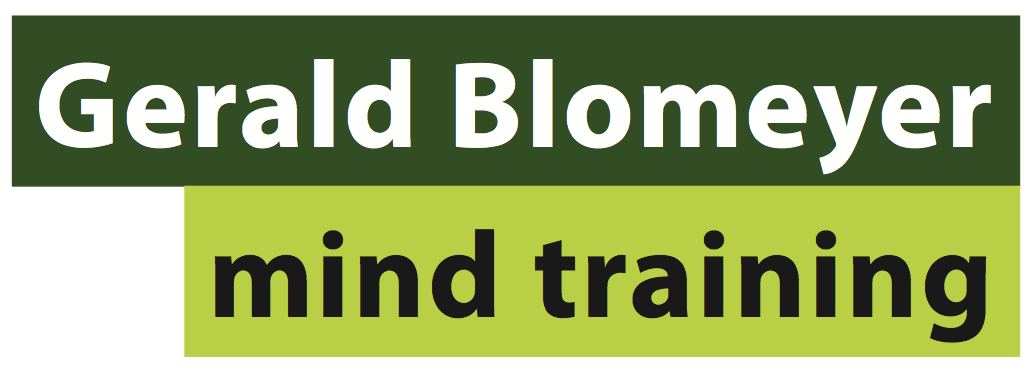Gerald Blomeyer
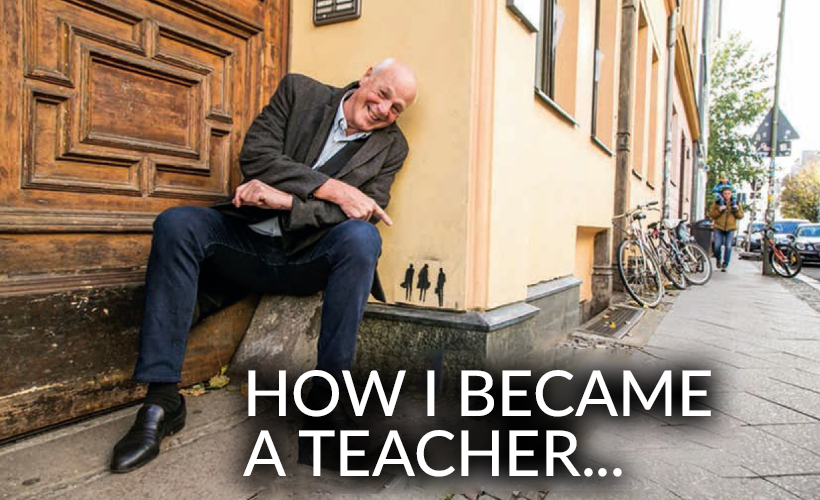
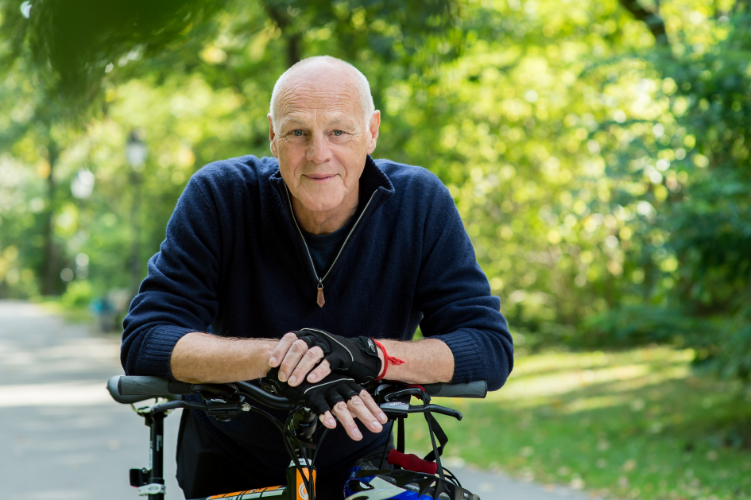
I NEVER THOUGHT OF TEACHING MEDITATION
Meditation is inseparable from my life. Ever since my student days in the seventies, it has taught me to open my heart, to see problems as opportunities and to trust that the right thing will always happen. But I never dreamed of becoming a teacher myself.
I inherited my passion for Buddhism from my father, and his interest in spirituality has had a strong influence on me since I was a child. He was born in Japan, then travelled the world as a diplomat with my English mother from 1951 onwards. Since the sixties he collected Tibetan Buddhist art.
I was born in London. I returned to Germany from New Zealand when I was 15. My parents moved on to the USA, Egypt and Malta. At the end of the sixties, I began to study architecture at the “Hochschule für bildende Künste” in Hamburg. A Tibetan lama, Geshe Gedün Lodrö, was teaching in Hamburg at the time, and my father wanted to meet him. I called him, we met and immediately hit it off. I instantly fell in love with the aesthetics and energy of Tibetan culture.
In 1970, together with two fellow students, I decided to research the relationship between Buddhist philosophy, design and construction in the tropics. For a month, I visited Tibetans in different parts of India, lived for a week long at the Hamburg Lama’s monastery in Mundgod, Southern India. The settlement, surrounded by fields, is now home to a large Tibetan community. I even met the Dalai Lama there. This “immersion” in the Buddhist world moves me deeply to this day.
TEACHING EXPERIENCE
After my studies, I taught the Theory and History of Architecture at various universities for ten years. In a short time I learned how to present a lot of information in a succinct way. Together with my first wife, Barbara Tietze, I organised exhibitions, conferences, workshops, made films for Hessischer Rundfunk and published books. At the time of German reunification, I gave up teaching and founded a public relations office with the journalist Rainer Milzkott. We developed concepts for the New Berlin for the Senate and the Magistrate of Berlin and then supervised large real estate projects. I gave lectures on Berlin and Urban Planning in over twenty countries.
THE MEDITATION POSTURE
In 1987 I learned meditation from a well-known Zen teacher (Roshi), the American Zentatsu Richard Baker. For several years I practised silent sitting (Zazen) regularly. Mind and body are trained as one, the goal is to simply sit. Simply? As every meditator knows, everything is simpler than that. But in these years I learned to concentrate, let ideas, images and thoughts arise and pass without engaging with them, and I learned to sit upright in the formal meditation posture.
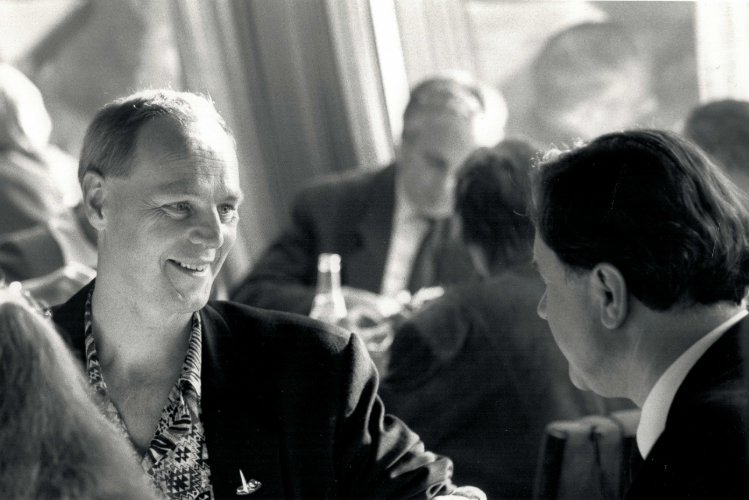
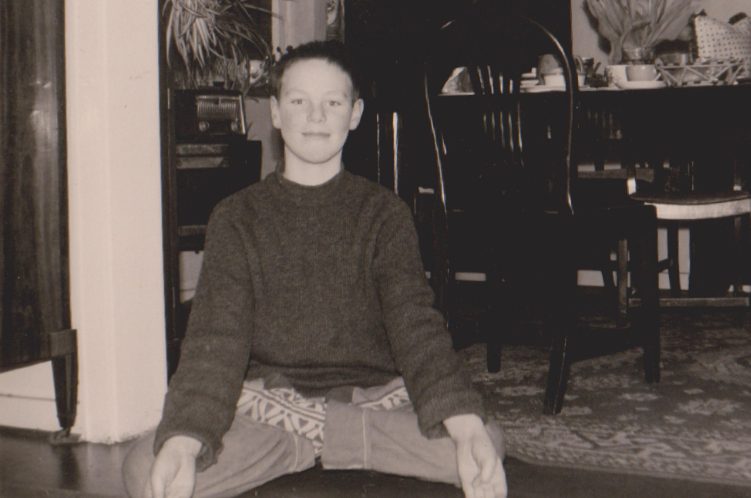
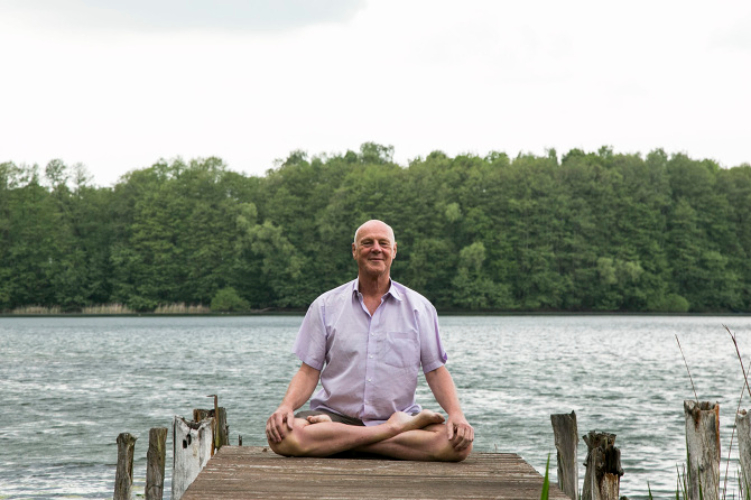
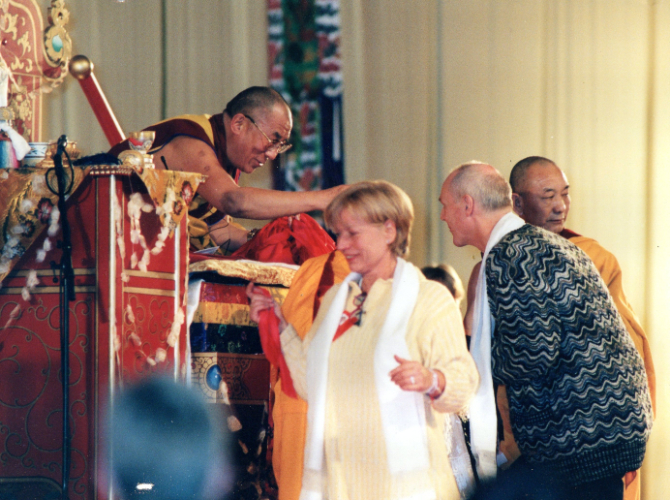
THE INITIATION
Together with this came a programme of contrasts. In the same year I got to know Reiki, the laying on of hands, on Hornby Island in Canada with Margaret Sinclair. This practice without much theory relaxed me deeply. I was fascinated by the energy that emanates from the hands. In 1991 I became a Reiki Master and organised the first East-West Berlin Reiki meeting, then the first nationwide Reiki meeting. Later in Nepal, Lama Lhundrup, the abbot of Kopan Monastery, told me that he first sends western students to Reiki classes to open their hearts. This sensitises them to Buddhist energies.
The true discovery is not in finding new shores, but in seeing with different eyes.
We grow by loving. Our world view is also determined by how we open or close our heart. In 1984 my son Fritz was born, which touched me deeply. In 1991 I met my second wife, Eva Etta. This great love lasted 15 years, until her death.
Eva Etta and I met Geshe Thubten Ngawang from the Tibetan Centre Hamburg on Malta in 1992. In Germany, at the centre, we learned about different types of meditation, which include recitations and visualisations, in addition to Buddhist philosophy.
FURTHER TEACHERS AND EXPERIENCES
In meditation, the Tibetan “deities”, which are actually energy fields or archetypes, are meant to help transform the “I”. The practitioner visualises himself as an enlightened being within a microcosm (mandala). These rituals begin and end with meditation on everything existing interdependently, as a continually changing process. Other important teachers were Geshe Tenpa Choepel and Geshe Ugyen Rinpoche, who recommended to me an exercise to transform anger into compassion. Lama FoFu taught in the Nyingma tradition, the oldest school of Tibetan Buddhism. We worked with the inner energy channels and inner heat (tummo).
In 1998 Eva Etta and I were part of the organising team for “Buddha’s Way to Happiness”, a seven-day Event with the Dalai Lama and 10,000 participants in the Lüneburger Heide.
THE JOURNEY
In 2005, Eva Etta died of cancer after months of intensive care. It was an extremely demanding time, but every evening I thought about what had happened during the day and how I could see it in a positive light. The intensity of our inward-oriented love was in stark contrast to the outward-oriented consumer society. After her death, I felt lonely and strange. To cope with my grief, I lived in India for five and a half years and then in Nepal for two and a half years. These were the right places to study Buddhism with outstanding teachers like the Dalai Lama.
After 2006, I did several retreats at the Buddhist Meditation Centre (FPMT) of Pokhara, Nepal. There I met the monk Choeding Rinpoche, who asked me in2011 to plan a new Buddhist centre. The old one had become too small and the courses were increasingly in demand. Because there were too few teachers at the centre, the resident monk Ven. Yeshe and the director Sonam invited me to teach meditation and later an introductory course on Buddhism.
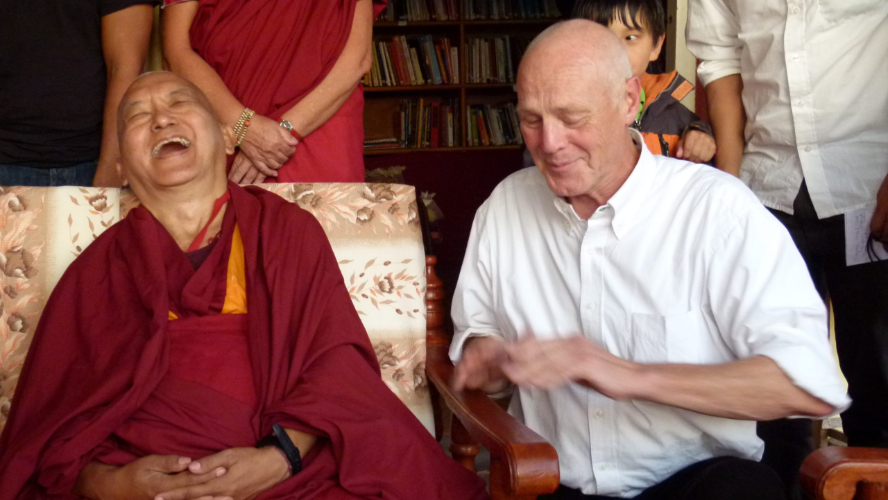
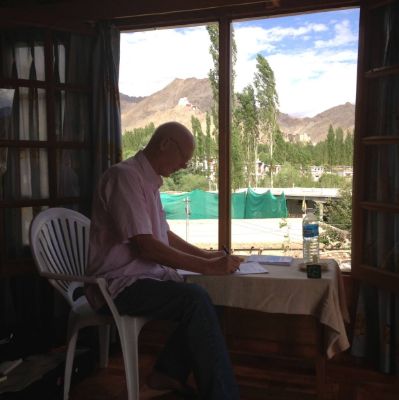
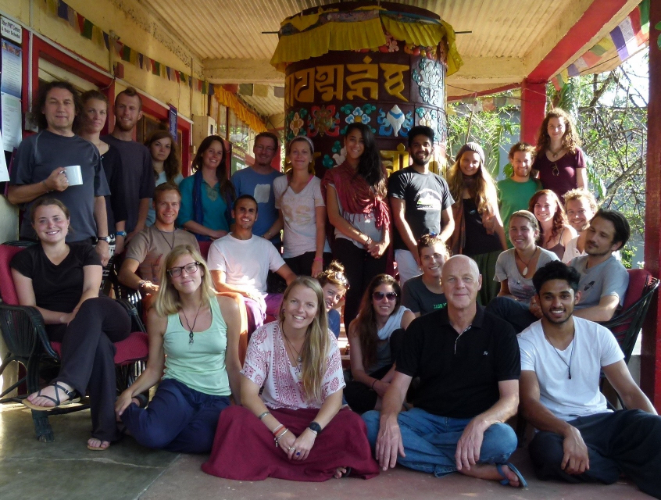

TEACHING MEDITATION WAS A SPECIAL TRAINING
At the centre, participants from all over the world, mostly around thirty, were only there for a short time. They wanted to be inspired and move on. To be able to teach meditation, I had to study every day. A good basis was the book “The Miracle of Mindfulness” by Thich Nath Hanh. He recommends that meditation should be enjoyable and not exhausting, as if we were enjoying a beautiful sunset. In order to come to rest with an alert mind, he recommends that beginners practise breathing meditation lying down (Shavasana).
I was lucky. Every morning, before the meditation session, there was an hour of yoga with Thanos Govindamurti, later with Chetana Meehan, both yogis of the Bihar School of Yoga. They always ended their classes with “Yoga Nidra”, the yogic or conscious sleep, a guided meditation while lying down. Since then, I have been practising and teaching this in a similar form, based on the style developed by Richard Miller (iRest).
Sitting in stillness needs a feeling for the centre of the body. I therefore began the meditations with the Qigong exercise “the rolling sea”. This dynamic meditation consists of flowing circular movements that stimulate our sensations and inner energies. Afterwards, one feels centred and free from thoughts.
FACE TO FACE WITH THE PARTICIPANTS
After the meditation, many participants were radiant, relaxed and refreshed. They felt more centred than before and had a feeling that their happiness is to be found within themselves and not outside. Many also ask questions. “I have been carrying my ex-boyfriend around for two years,” said a young woman in Pokhara. “In the compassion meditation (tonglen) I almost let him go. Can we please repeat this tomorrow morning before I leave?” As she drove off, she at last felt free and beamed. Such interactions with participants have inspired me to expand my repertoire. How can I help people find calm, plan their next step or deal with their fears?
THE NEW BEGINNING
All the travelling, teaching and working in my PR-agency has helped me to accept life as it is. I have learned to trust that everything will work out the way that is good for me. During my time in India, I let myself be guided by my intuition to live in the “flow”. When I returned to Germany in 2014, I quickly realised that mindfulness training was offered everywhere as MBSR (Mindfulness Based Stress Reduction) or, a little later, as “Search Inside Yourself”. But it was soon clear to me that I didn’t want to work for a centre or start a company. I wanted to be independent, close to my students,compassionate and authentic. I expanded to teach mindfulness courses in companies, e.g. at the European Central Bank ECB.
Again and again I was asked for audio recordings of the meditations. When I made the first podcasts available on my website, a participant suggested that I make them available on the meditation app Insight Timer in German and English. They liked my style and commissioned me to read a first bedtime story. Stories transport us into other worlds. They support our self-knowledge, comfort our suffering and make our world lighter and more beautiful. The appcategorises them as “secular mindfulness”.
Being online also means that my meditations today largely take place without me. The approximately forty podcasts, in both German and English, have been downloaded or streamed 30,000 times from my website. A selection on InsightTimer has even been listened to over 450,000 times, and 3,700 people from allover the world follow my page there. However, I have no idea who these people are. Even with the live meditations, I don’t know what moves the participants. However, I trust that in the virtual encounter we create a new kind of community.
The stars of the ratings and the number of “plays” are an indication of how well the podcasts are received. The bedtime stories and the sleep-meditation (Yoga Nidra) are particularly popular. But feedback from the participants is lacking. Recording has changed my voice. At the beginning it was formal and fast. “Less BBC and more Belafonte,” a friend suggested. I can do that now. I test new things in a small circle at the Monday meditations on Zoom.
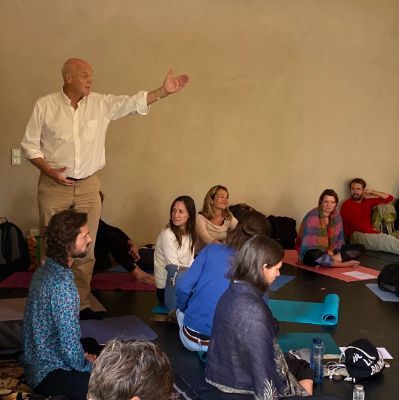

WHAT IS MY MOTIVATION?
Love is the driving force in my life. My goal is to remind people how to bring love and compassion into all areas of their lives. It is about calming the mind and yet being vulnerable. Those who open their hearts and develop compassion can heal themselves and learn to trust their innate wisdom. I try toteach the tried and tested practices in a modern form so that everyone can usethem in everyday life. Only death is certain. Gain and loss, praise and blame, joy and pain come and go.
In the sessions we reflect on the value of keeping a peaceful heart and treating others with compassion. We recognise that people can love immensely. Buddhism is about awakening, not simply about feeling better. It is about realising the nature of the mind, free from hatred, greed and delusion.
WHAT DOES IT DO FOR ME, FOR THE PARTICIPANTS, FOR SOCIETY?
Meditation has taught me how to deal with what is – or what is not. It helps me to respond skilfully to the difficulties and imponderables of life. It teaches me how to maintain a sense of equanimity and confidence in the process.In the ten years that I have been teaching meditation, many things have changed. It is now well known that meditation changes our brain and nervous system. Online courses have become more and more important, Covid increased the demand exponentially. This is an indication of the positive and supportive effect meditation has.
Online, formal sitting and the associated techniques play a subordinate role for me. Meditation is an inner state, the art of letting everything be as it is. It is also the art of moving from the head to the heart. I will continue to offer meditations to help people find confidence, open their hearts and to inspirethem to find new perspectives for themselves and a humane world. As I said, when I was twenty years old I never dreamed of teaching meditation myself. But I always trusted that the right thing would happen to me. That’s exactly how it turned out. I became a teacher, wholeheartedly.
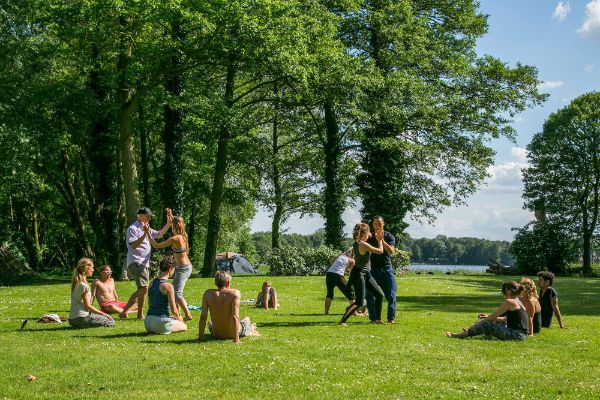
Source of the article: TIBET UND BUDDHISMUS APRIL | 2021
Download Article as PDF
Image sources
1 & 11) heidischerm.de 2) tompeschel.de 0 & 4 & 12) kimberlylaurenbryant.com 5) jensnagels.de 9) photos-et-cetera.de 10) Nicola Steinigeweg
Network partner
Andrea Montua
Montua & Partner, Hamburg
Konzeption und Implementierung von Kommunikationsinstrumenten
http://montua-partner.de
Gundula Trogemann
tacit|p - Training and Coaching in Transition, Berlin
www.tacitp.com
Heidi Scherm
Heidi Scherm Fotografie
www.heidischerm.de
Katja Grünebaum
einfallsreich Berlin
Leibnizstrasse 38, 10625 Berlin
http://einfallsreich-berlin.de
Sybille Wieschendorf
wieschendorf design
Kommunen, Veranstaltungen und Orte seit 1990.
www.wieschendorf-design.de
